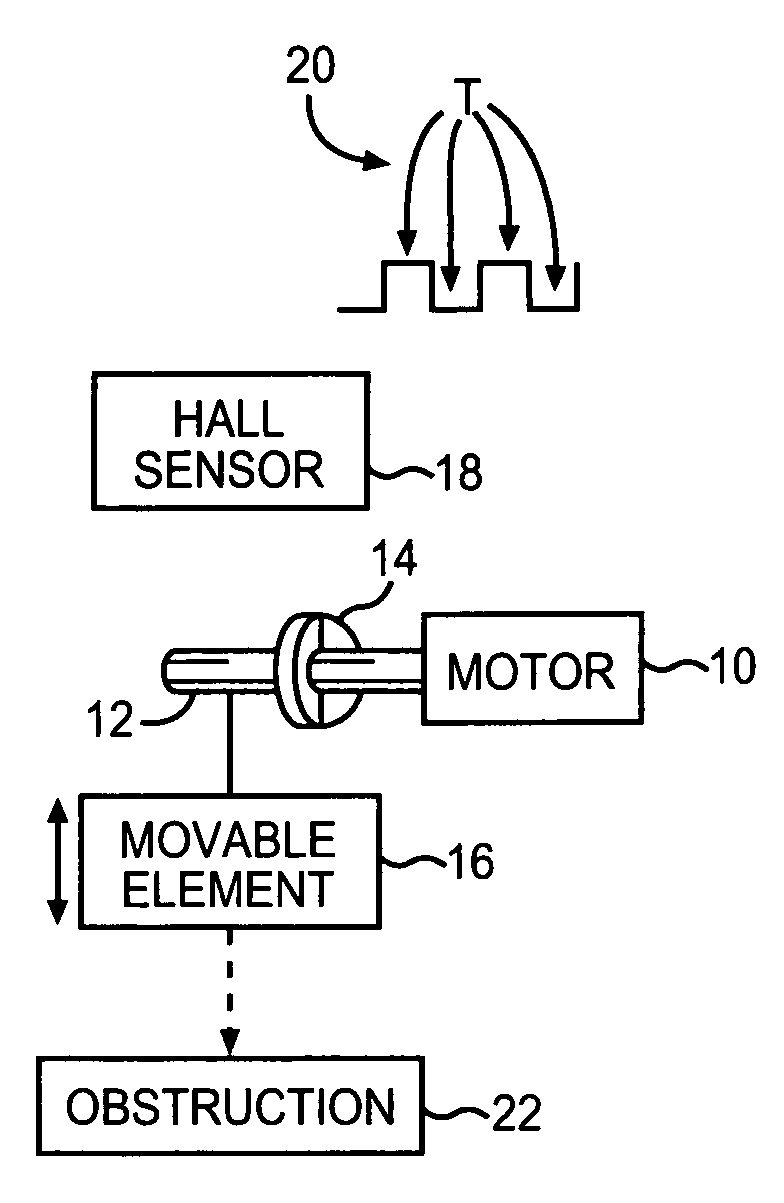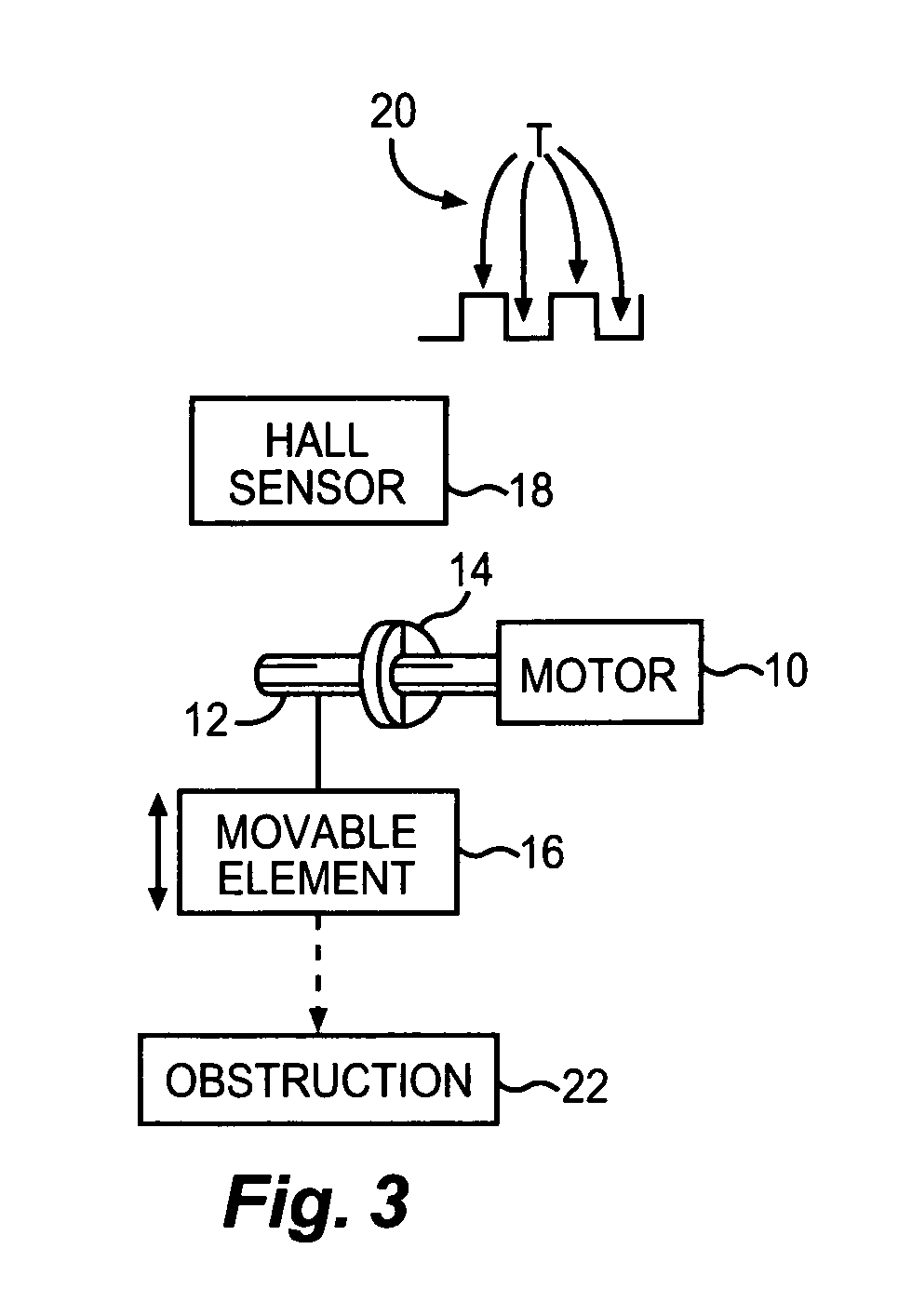Method for recognizing an obstructive situation in a motor driven element
a technology of obstructive situations and motors, which is applied in the direction of motor/generator/converter stoppers, dynamo-electric converter control, instruments, etc., can solve problems such as obstructive situations, and achieve the effect of much greater accuracy
- Summary
- Abstract
- Description
- Claims
- Application Information
AI Technical Summary
Benefits of technology
Problems solved by technology
Method used
Image
Examples
Embodiment Construction
)
[0020]The shaft 12 of an electric window raising motor 10 in a motor vehicle has arranged on it a magnet 14 having four poles in the peripheral direction. A Hall sensor arrangement 18 that is stationary to this magnet is used for detection of the respective magnet polarity that is applied to the Hall sensor. Thus, in this sample embodiment shown, rotation of the armature shaft by 360° is characterized by passing through four periods 20, referred to as motor periods T. Thus, the length of a motor period is a direct measure of the rotational speed of the window raising motor.
[0021]When the window 16 driven by the window raising motor is closed under normal conditions the window raising motor ideally rotates at a constant speed. In reality, however, this is subject to statistically distributed fluctuations. These fluctuations are not constant and are the result of the power transmission system and the friction of the window in its guide. Operation of the drive motor with constant rota...
PUM
 Login to View More
Login to View More Abstract
Description
Claims
Application Information
 Login to View More
Login to View More - R&D
- Intellectual Property
- Life Sciences
- Materials
- Tech Scout
- Unparalleled Data Quality
- Higher Quality Content
- 60% Fewer Hallucinations
Browse by: Latest US Patents, China's latest patents, Technical Efficacy Thesaurus, Application Domain, Technology Topic, Popular Technical Reports.
© 2025 PatSnap. All rights reserved.Legal|Privacy policy|Modern Slavery Act Transparency Statement|Sitemap|About US| Contact US: help@patsnap.com



